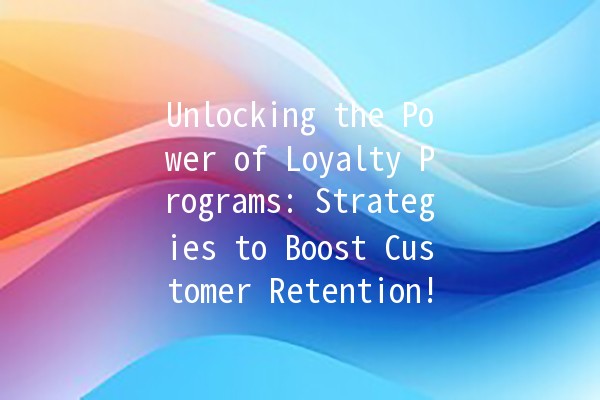Loyalty programs have become a prevalent strategy for businesses looking to enhance customer retention and build longlasting relationships with their clientele. By rewarding customers for their repeated purchases or engagement, companies can effectively increase brand loyalty and stimulate higher sales volumes. This article delves into the world of loyalty programs, providing actionable tips and strategies to help businesses optimize their systems for maximum impact.
Understanding Loyalty Programs
Loyalty programs are structured marketing strategies designed to encourage customers to continue to shop at a business associated with the program. They reward customers with points, discounts, or exclusive offers based on their purchasing behavior. These programs are not just a promotional tool; they are instrumental in gathering valuable customer data and insights that can inform marketing strategies and product offerings.
Key Benefits of Implementing a Loyalty Program

Five ProductivityBoosting Techniques for Loyalty Programs
Description: Tailoring rewards to individual preferences increases their perceived value and effectiveness.
Application Example: Use customer data to offer personalized rewards based on past purchases. For instance, a coffee shop might offer a discount on a customer's favorite drink after their tenth purchase.
Description: Creating different levels within a loyalty program can motivate customers to reach higher tiers for better rewards.
Application Example: Implement a tiered system where customers qualify for increasing benefits with more significant spending. For instance, the first tier offers basic rewards, while the highest tier includes exclusive experiences or higher discount rates.
Description: Incorporating gamelike features can make participation more engaging and enjoyable.
Application Example: Introduce point systems where customers earn badges for milestones, such as referring friends or making frequent purchases. Create leaderboards to display top participants and incentivize competition.
Description: Ensure that the loyalty program is integrated across online and offline channels for a seamless customer experience.
Application Example: A clothing retailer might allow customers to earn points both instore and online, ensuring that regardless of their shopping method, they can easily accumulate and redeem rewards.
Description: Keeping customers informed and engaged through regular communication enhances loyalty program effectiveness.
Application Example: Send personalized emails or notifications updating members on their points balance, new offers, or exclusive events. For instance, a beauty brand could inform customers about an upcoming exclusive sale for loyalty members.
Common Challenges in Loyalty Programs
Difficulty in Customer Engagement
Many businesses struggle with initially engaging customers in their loyalty programs. To overcome this, businesses should offer immediate incentives for signing up, ensuring that the perceived value is clear from the onset.
Low Redemption Rates
If customers find rewards unattainable or irrelevant, they may disengage. Ensuring that rewards are attainable and appealing is crucial; businesses should regularly assess customer feedback to adjust their offerings accordingly.
Complicated SignUp Processes
Complex or timeconsuming signup processes can deter potential members. Strive for simplicity, allowing signup through various channels (web, app, instore) without excessive friction.
Frequently Asked Questions (FAQs)
What types of businesses can benefit from a loyalty program?
Loyalty programs are versatile and can benefit a wide range of businesses, including retail shops, restaurants, online services, travel companies, and more. Any business that has repeat customers can leverage a loyalty program to incentivize continued patronage.
How can I measure the success of my loyalty program?
Success can be measured through various metrics, including membership growth, retention rates, average purchase value, and customer lifetime value (CLV). Analyzing program participation data will help businesses understand how effectively their program drives loyalty and revenue.
What are the best ways to promote a loyalty program?
Promote your loyalty program through multiple channels, including instore signage, social media, email newsletters, and your website. Create engaging content that clearly explains the benefits of joining and highlight exclusive deals that members can unlock.
Can loyalty programs be effective for small businesses?
Absolutely! Small businesses can leverage loyalty programs to foster strong relationships with their customer base. A simple, locallyfocused program can build community trust and increase repeat business.
What technology is needed to implement a loyalty program?
Investing in a robust Customer Relationship Management (CRM) system can facilitate the implementation and management of a loyalty program. Additionally, many pointofsale (POS) systems offer integrated solutions for tracking customer purchases and rewards.
How often should I update my loyalty program?
Regularly reviewing and updating your loyalty program is essential to keep it relevant. Consider seasonal updates or refreshing reward structures based on customer feedback at least once a year to maintain engagement.
Crafting an Effective Loyalty Program
To craft a successful loyalty program, businesses should start with a clear understanding of their goals and customer base. Here are the essential steps to consider:
In a highly competitive business landscape, loyalty programs can provide a significant edge. By understanding customer preferences, leveraging technology, and optimizing program structures, businesses can foster lasting relationships with their customers, driving loyalty and encouraging repeat engagement.
As your business embarks on this journey, remember that a successful loyalty program isn't just about the rewards—it's about creating meaningful connections and experiences that resonate with your customers.